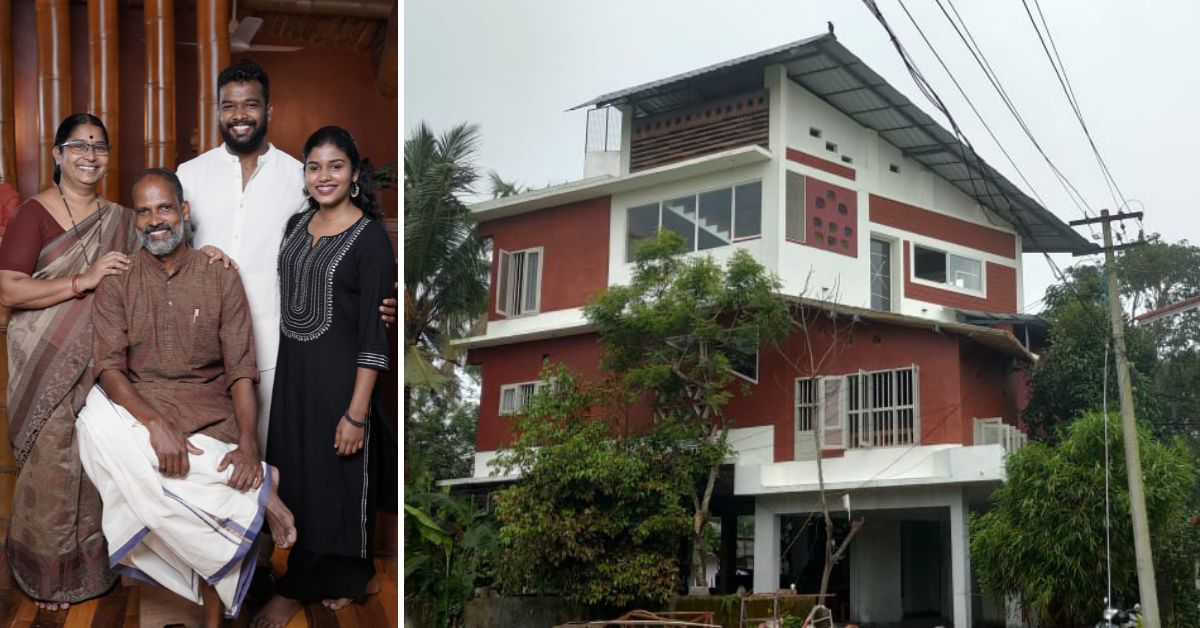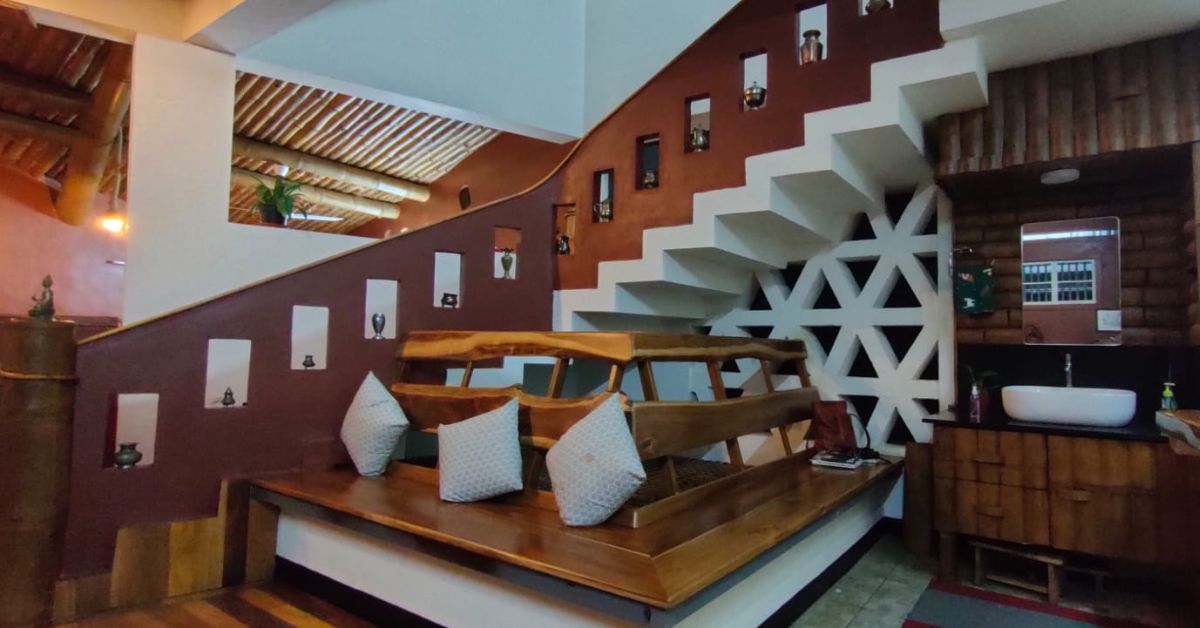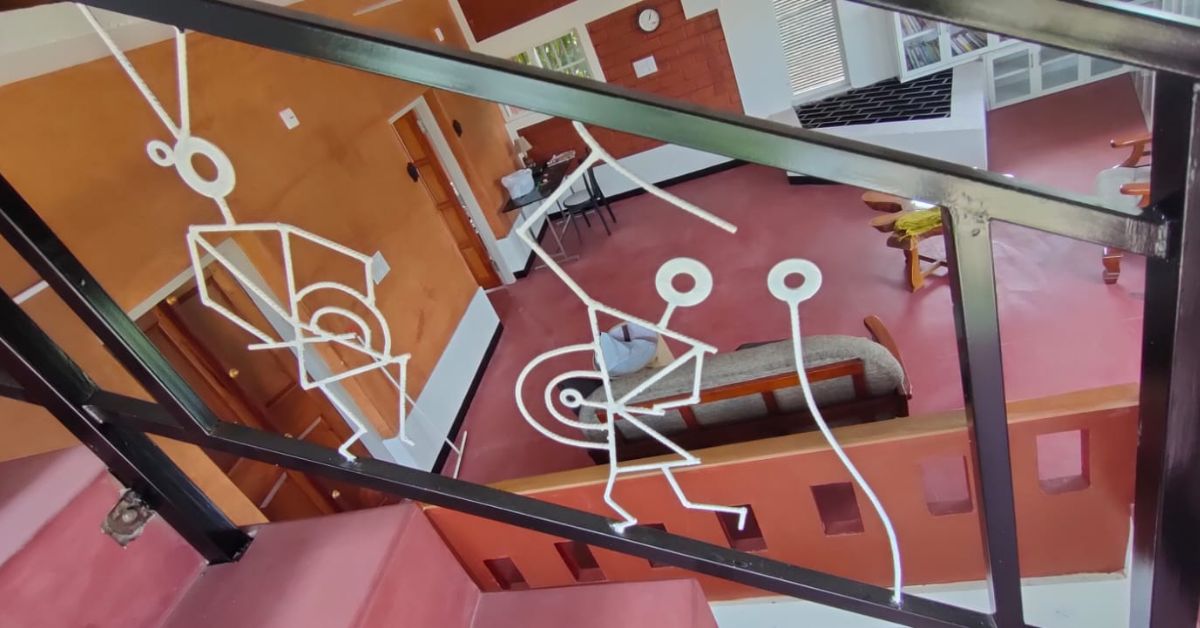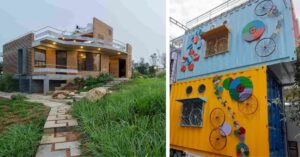How I Recycled my Old House to Build Flood-Proof Eco-Friendly Home That Stays Cool
Purushan Eloor from Kerala built a flood-resistant sustainable house in Eloor near Kochi. He recycled his 25-year-old concrete house which was heavily damaged during the 2018 Kerala floods.

Eloor, a suburb on the banks of the Periyar river in Kerala, has been facing the threat of flooding for a very long time.
Though there were several incidents of flooding in the past, the one that hit the region in 2018 was the most chaotic, recalls Purushan Eloor, an environmental activist and a construction contractor.
When the great flood of 2018 hit different parts of the Southern state, Eloor was one of those regions which were badly affected with most of the houses being submerged – leading to heavy damage and property loss.
“This actually led me to think of building a flood-resistant and sustainable house,” Purushan tells The Better India.
He grew up in Eloor and stayed for over two decades in his one-storey concrete house until it was submerged in the floods in 2018.
“We lost almost every material thing we had in our house. But what worried me the most was losing all the archives and documents I had collected in connection with the issue of Periyar river pollution,” says Purushan who has been at the forefront of protests against river pollution. “I didn’t want that to happen again,” he adds.
By holding onto the philosophy of building a flood-resistant and sustainable home by reducing the carbon footprint, Purushan built his unique abode by recycling his old concrete house and spending just Rs 36 Lakh.
Room for a river

Being in the construction field Purushan was always interested in environment-friendly methods and wanted to adopt the same for his house as well. “Besides, being an environmental and social activist I wanted to set a model and wanted to practice what I preached. That’s how our sustainable house was born,” he says, adding that the house was designed by Architect Ganga Dileep with whom he has worked on several projects.
“People often have a misconception that while adopting alternative construction methods, the desires of what you want from a home gets compromised. But this house proves it to be wrong. We could say the house is minimal but I feel it is luxurious as it aligns with the concept of being environmentally friendly. Therefore nothing has been compromised here,” says Ganga.
The highlight of the 3000 sq ft house is its unique design plan around the concept known as ‘Room for a river’.
“It is a Dutch-inspired design plan to protect buildings during floods. So, the ground floor of the house was left unbuilt with pillars raising the two storeys above,” she adds.
Purushan explains, “In 2018, when the flood hit my house, there was water upto 8.5 feet, therefore we decided to elevate our first floor to a height of 10 feet. So, if a flood hits, the water can easily flow through the space beneath hence the concept ‘Room for a river’.”
The story of junk wall

The column and beam structure on the ground floor upholds the first floor, which is built with debris from his old house. “The house I used to stay in the same location as my new house. I have rather an emotional connection to it, as it was where my parents lived and there were a lot of memories attached to it. I wanted to preserve that, so I decided to recycle and merge it to my new house,” he says, adding that the concrete debris, bricks, bathroom tiles and even closets from his old house were recycled to build the first floor.
“It is also a responsible step towards reducing the carbon footprint which is on a rise,” he adds.
Thus the walls of the first floor have been completely built using recycled debris, mixed with several natural materials like coconut fibre, straws, rice husk along with just 10 per cent of cement. “Hence, it is called the junk wall,” says Purushan who stays with his wife and children.
There are also pieces of wood that have been interspersed on the junk wall to show that anything can be included on the walls likewise. The junk wall has been given different finishes like rough, semi-rough, glossy and so on in different parts using sand.
The first floor is comprised of a visiting room, dining space, master bedroom and an open kitchen.
The visiting room is spacious and has furniture built using wood that is usually not used for making furniture, Purushan says, adding that his favourite spot in the house is the visiting area.
“When it comes to furniture there are certain woods that we conventionally use, but I sourced wood that is usually not used for building furniture from different mills and treated it to make it good enough to craft furniture out of it,” he explains adding that even the flooring of the first floor has been done using scrap wood pieces that gets wasted while building furniture, doors, windows, etc.
“We wanted to make sure that the concept of recycling has been followed throughout. So, we sourced these materials and made the maximum out of it,” he says.
When it comes to the second floor, the flooring has been done using a conventional red oxide mix and has been left unpolished.
“I was very particular about reducing the number of tiles being used in my house. So, we have just used it in the kitchen and bathrooms as these places are prone to moisture risk,” says Purushan.
Also, the ceiling of the living room has been done using bamboo mesh rather than using iron rods and the rest of the ceiling has been done using RCC (reinforced cement concrete).
Besides, the rails of the staircase leading to the second floor have also been done using bamboo and have been decorated using Rajasthani antique pieces.
The second floor includes two bedrooms with attached bathrooms and a hall with a library. The walls of the second floor have been made with reinforced bamboo bind with a mix of natural materials like clay, rice husk, coconut fibre, straw along with cement.
“We have two show walls on the second floor made using beer bottles and the staircase leading to the terrace has been decorated with warli designs, using the metal rods from the old house,” says Purushan adding that it leads to the open terrace where they are planning to set up solar panels.

Other than that, the house has two ‘air columns’ that help bring in good ventilation and reduce the heat inside the house. “The house stays very cool even in summers and we don’t use air conditioners. Also, we have built more open windows and jali work on walls so that natural light is available throughout the day,” he adds.
Talking about challenges, he says that “It was very difficult to find people who are skilled at working with bamboo. As I had some experience, I managed to guide the workers throughout,” he adds.
(Edited by Vinayak Hegde)
This story made me
- 97
- 121
- 89
- 167
Tell Us More
We bring stories straight from the heart of India, to inspire millions and create a wave of impact. Our positive movement is growing bigger everyday, and we would love for you to join it.
Please contribute whatever you can, every little penny helps our team in bringing you more stories that support dreams and spread hope.



















